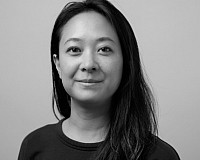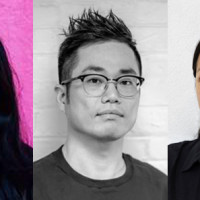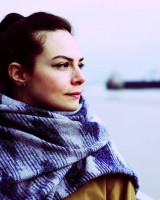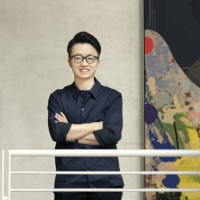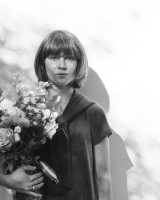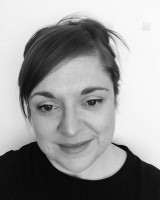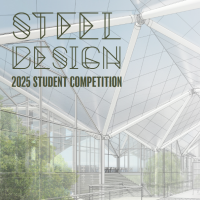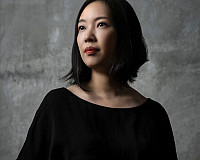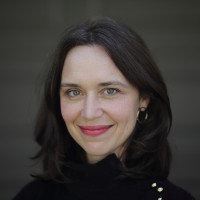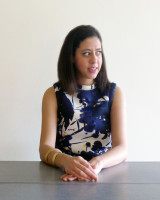As the flagship program of Landmark Columbus Foundation, Exhibit Columbus is an exploration of community, architecture, art and design that activates the modern legacy of Columbus, Indiana. Through a two-year cycle of events, conversations are convened around innovative ideas, and then site-responsive installations are commissioned to create a free, public exhibition.
Now in its fifth cycle, this year’s theme, “Yes And,” invites contributors to explore the legacy of Columbus by adding to the multiple and overlapping lives of buildings and spaces. Originating in improv theater, “Yes And” is a technique for affirming and building upon an idea to create a shared narrative.
This year, University Design Research Fellowships were awarded through a national, open-call competition for full-time university and college professors whose work explores community-based urban design and the challenges facing activating historic downtowns. Applicants were asked to respond to the “Yes And” theme and work from existing material to shape positive change. UDR Fellows were then shortlisted and selected, from nearly 50 submissions, by the 2024-25 Curatorial Partners based on the Request for Qualifications process.
“The high level of research represented by these six University Design Research Fellows is inspiring and we are honored to showcase their work in this cycle of Exhibit Columbus. Together, these professors place emphasis on the curatorial theme, ‘Yes And,’ in their own way, and collectively allow us to build an exhibition that has curatorial depth across the country,” the five curatorial partners said in a joint statement.
Through a cycle of events, the fellows—along with four J. Irwin and Xenia S. Miller Prize recipients—will work with community members in Columbus to create installations at various locales, encouraging the public to collaborate in the creation of the ongoing performance of the city. Whether it’s recovering architectural remnants, reflecting on cultural legacy, staging a dramatic spectacle, or reimagining public play, “Yes And” invites everybody to the public spaces of Columbus to expand what forms of togetherness and collaboration are possible. Winning fellows can request a budget of up to $15,000 to support the realization of an installation during the three-month exhibition in downtown Columbus.
The team of Myers, César A. Lopez (University of Virginia), Amelyn Ng (Columbia University), and Germán Pallares-Avitia (Rhode Island School of Design) bring a strong interdisciplinary track record in public installation and exhibition, material experimentation, and historical architectural research to the UDR Fellowship and the legacy of Exhibit Columbus.

Building upon Columbus’s exemplary modern architecture in conversation with its community, the team’s proposed project, “Public School Grounds,” aims to extend their admiration for modern architecture to children and the larger Columbus community by fostering an environment that encourages hands-on learning, imaginative exploration, and meaningful interactions for individuals of all ages.
The project installation will draw inspiration from the dynamic rooflines and material patterns found in mid-century modern-designed schools in Columbus. Throughout the fellowship, the team will work with the students, educators, and staff at these schools to scale down and collage these rooflines to create an engaging sensorial platform for children.
“Public School Grounds” will become a tactile experience, potentially constructed from reclaimed local brick or colorful recycled foam, drawing from the vast range of brickwork and bond patterns found across Columbus’ modern architectural landscape. By creating an interesting and interactive space at ground level, the new public space will showcase the influence of educational architecture on the city, highlight the significance of children in the community and prioritizing hands-on play as a learning tool.
Designing and planning for a longer life cycle for the project and its materials is a critical objective of the installation. By finding a reuse after the Exhibit Columbus programming concludes, the mission of exposing a broader community to the wonder and beauty of the built environment will have a longer legacy. Recognizing that not all schools have equal resources, the team aims to design their project in pieces or sections so that it can easily be assembled, disassembled, transported, and distributed to schools needing recreational equipment and/or to communities as public furniture. Alternatively, if the project is donated to a single school or after-care organization, the team hopes its design can be “re-collaged” in various configurations, rather than remaining in its original consolidated form, allowing the project to evolve according to the new client’s needs and contexts.
The built installation will be accompanied by a series of workshops and programs facilitated by the “Public School Grounds” team who will work directly with students, educators, and staff at select local schools through key partnerships with two related organizations—the Bartholomew Consolidated School Corporation (BCSC), which oversees the public schools in Columbus, and the Bartholomew Consolidated School Foundation (BCSF), which supports the learning experience of Columbus youth.
Myers, an urbanist whose practice includes work as an editor, writer, podcaster and curator, will bring her expertise in sound to the project and explore the sonic breaks and flows of a young student’s day.
“There is an auditory schedule that schoolchildren keep that vanished from the public soundscape during the COVID-19 lockdowns,” says Myers. “I will be researching the bells that organize quiet and frenzy, the many languages that Columbus students use and the organized bustle of drop-offs and pick-ups to develop a light, soothing soundscape that activates the physical playscape.”
Throughout these events and the Exhibit Columbus programming, the team will observe and document how children and community members engage with their project, with a goal of creating a series of diagrams that can inspire future educational spaces.
By using a collaborative and community-engaged approach, “Public School Grounds” seeks to bring the tactile and sensory elements that have enriched educational environments within schools to the broader public and inspire inquisitive play within the city of Columbus.
As University Design Research Fellows, Myers and her team recently attended the two-day 2024 Exhibition Columbus Symposium where they were paired with BCSC’s Central Middle School and Columbus Signature Academy (CSA) Lincoln Elementary School. Working at these unique sites, they will create an installation that will become a focal point during the 2025 Exhibit Columbus event in August 2025.
